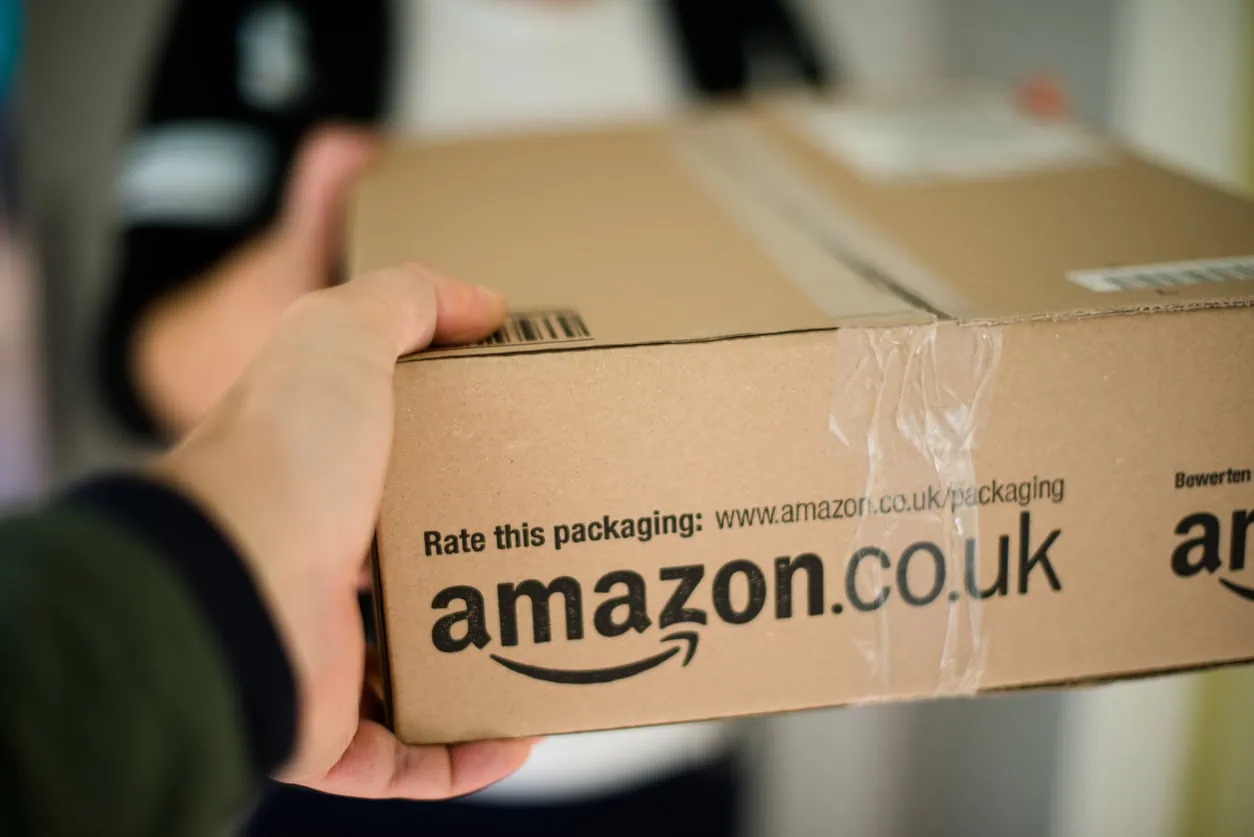
Expanding your e-commerce business into Europe’s thriving marketplaces has the potential to unlock millions of new customers and transform your brand – but simply translating your product listings for a new international audience isn’t enough.
To win trust and repeat sales, you’ll need to localize the entire customer experience. That means adapting your listings, service, delivery promises and marketing to match the local habits and expectations of your customers, wherever they are located.
This guide gives you the essentials for navigating Europe’s leading online marketplaces, outlining what makes each country unique, as well as sharing practical tips to help you build a localized strategy that works.
Jump to:
- The Rise of Online Marketplaces in Europe
- E-Commerce Marketplaces Across European Countries
- Top Tips for European Marketplaces
- The Future of European Marketplaces
- How ILG Can Help
The Rise of Online Marketplaces in Europe
Online marketplaces, where multiple sellers offer products to customers through a single trusted platform (either online or via an app), dominate European e-commerce. Over 70% of European online shoppers visit marketplaces each month to compare products, read reviews and find the best deals.
Marketplace dominance varies significantly across European countries, with Amazon remaining the largest online in most. However, local leaders – such as Bol.com in the Netherlands, Allegro in Poland, and eMAG in Romania – now command substantial market shares in their home territories. Understanding this marketplace ‘hierarchy’ is key to prioritizing your expansion and budgeting effectively.
Why is marketplace e-commerce important for US brands?
Firstly, it removes the complex demands of launching a dedicated local website. Offering built-in traffic and ready-made trust, businesses often enjoy faster returns on investment – but competition is high. To stand out, you must fully understand each market’s nuances and tailor your approach accordingly.
E-Commerce Marketplaces Across European Countries
Europe might feel like a single region – and a relatively small one, geographically, in relation to the US. There are, in fact, 44 countries in Europe and 24 (official EU) languages – so it’s no surprise that buying behavior, platform popularity and customer expectations vary widely from one to the next.
Here’s a closer look at six of the biggest European markets, together with some key insights on how to succeed in each one.
Germany
Germany is the second biggest e-commerce market in Europe, ranking 6th globally. Amazon.de is the dominant marketplace, with German eBay, Otto and Zalando also popular online shopping hubs for the nation’s digitally savvy, detail-focused shoppers.
- Opportunities: Strong consumer trust in big platforms helps new brands to gain visibility quickly. German shoppers value sustainability, so highlighting eco-friendly products can help you stand out while seasonal peaks, like Christmas, will boost sales for planful sellers. Brands that invest in precision, quality and sustainability tend to win repeat business.
- Challenges: Marketplace fees and advertising costs are among Europe’s highest, so manage margins carefully. Regulatory compliance is also rigorous, with packaging laws, product certifications and recycling rules heavily enforced. Customers expect clear, high quality product information in fluent German, with straightforward returns and outstanding after-sales service.
France
France is Europe’s third largest e-commerce market, with Amazon.fr topping the list of popular online stores, followed by Cdiscount, Rakuten France and La Redoute. Shoppers appreciate detailed listings in flawless native French, transparent pricing and easy returns.
- Opportunities: France is a great market for fashion, beauty and luxury goods and consumers love discovering new brands. Official sales periods (‘Soldes’) in January and July can significantly boost sales volume.
- Challenges: Consumer protection laws are strict and must be observed carefully as French consumers can be quick to report violations. Language quality is scrutinized heavily; poorly localized listings can turn shoppers away, significantly damaging brand credibility. Responsive service and accurate delivery details are also essential.
United Kingdom
The UK is Europe’s most lucrative online market – the third largest globally, behind the US and China. Amazon.co.uk and eBay UK dominate, while Etsy and Wayfair are also popular. Shoppers expect next-day delivery, trusted reviews and responsive customer support. Social shopping on Instagram and TikTok is booming, especially for fashion and lifestyle brands targeting younger buyers.
- Opportunities: Brits are open to international brands that offer fast shipping and clear pricing. Next-day delivery remains a big driver of loyalty, while seasonal promotions, influencer partnerships and smart social commerce strategies can boost your visibility and sales.
- Challenges: Competition is fierce and consumer price sensitivity has grown due to economic pressures. Brexit has added customs and VAT complexities, meaning sellers must stay on top of duties and paperwork to avoid delays or fees. The UK’s consumer rights framework is also among the world’s strongest, so clarity and compliance are non-negotiable.
Italy
Italy’s online marketplace is small but fast growing. Amazon.it leads the way, with eBay Italy and Zalando also popular shopping destinations for clothing and shoes. Italian shoppers enjoy high-quality lifestyle product imagery, so aspirational product pages perform well. Discounts, promotions and loyalty perks encourage repeat buys.
- Opportunities: There’s room for international brands, especially in fashion and personal care. Mobile shopping is also on the rise, with influencer marketing performing exceptionally well, particularly on Instagram and TikTok.
- Challenges: Delivery can be challenging in Italy’s rural and southern areas and cash-on-delivery payments remain common in some parts. Localized customer support in Italian helps build trust.
Spain
Spain’s young, mobile-savvy population shops from Amazon.es, El Corte Inglés and Privalia, enjoying clear savings, loyalty perks and easy returns. Communication in Spanish is expected.
- Opportunities: Spain offers good potential for cross-border sellers offering strong value and quick shipping. Social media and influencer marketing also perform well.
- Challenges: High price sensitivity means your listings must stand out through value, not just branding. Delivery speed and local returns options must meet expectations, while listings may need localization for Spain’s regional languages.
Netherlands
Dutch shoppers are digitally confident and eco-conscious. Bol.com is the largest marketplace, with Amazon.nl gaining traction since its launch. Detailed product descriptions, honest delivery promises and sustainable packaging matter.
- Opportunities: The compact geography and excellent logistics infrastructure of the Netherlands make quick delivery feasible. Omnichannel shopping and subscription models also perform well.
- Challenges: Dutch customers are unforgiving of vague or inaccurate listings. Competition is tight, so clear communication, positive reviews and local presence will help your brands to stand out. Sustainability claims should be genuine to build loyalty.
Top Tips for European Marketplaces
With an understanding of the opportunities and challenges presented by some of the top European e-commerce landscapes, here are some practical steps to localize your approach and outperform competitors:
Use professional, native content: Avoid simple, literal translation and instead work with native speakers to create high-quality listings, website content and supporting marketing materials that feel natural and trustworthy. Adapt imagery and colors to fit local tastes.
Know the rules: Each marketplace has its own seller standards, fees and advertising tools. Creating compliance checklists for each market, including GDPR requirements (Europe’s strict data privacy law) and local consumer protection regulations will help avoid fines or even suspension from the marketplace.
Think mobile-first: Europeans increasingly shop via their smartphones, so optimizing images, titles and descriptions for small screens will keep conversion rates high. Test your listings on various device sizes and connection speeds, as mobile internet quality varies across European regions.
Use marketplace tools wisely: Investing in sponsored listings, deals and seasonal campaigns will boost visibility and drive traffic, especially important when entering a new market. Each marketplace has unique advertising algorithms and promotional calendars that require platform-specific strategies.
Deliver on promises: Fast, reliable shipping and easy returns make the difference between a one-off purchase and a loyal customer. Multilingual customer support will help address inquiries and resolve issues effectively, while partnering with a local 3PL can keep shipping costs low and returns easy.
Monitor and respond: Track your performance across each marketplace, watch reviews closely and adjust your strategy based on what resonates in each market. Automate monitoring for brand mentions, competitor pricing changes and review sentiment across multiple platforms.
The Future of European Marketplaces
Europe’s marketplace scene shows no sign of slowing down. Projected to hit US$900 billion by 2028, its growth is driven by mobile shopping and niche platforms that serve specialized interests, from handmade goods to sustainable products.
For US brands, this means a huge opportunity, but also a need to stay agile. As competition grows, having clear local differentiation, reliable fulfillment, optimized logistics and flexible customer service will set you apart.
How ILG Can Help
Selling successfully in Europe’s marketplaces demands strong local knowledge and reliable operational support. ILG has 30 years’ experience helping high-growth US brands thrive in Europe with:
- 12 specialized fulfillment centers across the UK and EU
- Award-winning customer service
- Global returns solution
- European compliance support via our SimplyVAT partners
- A smart tech platform that integrates with major marketplaces for real-time inventory, orders and performance tracking
If you’re ready to make your European expansion smooth and profitable, we’re here to help. Get in touch today or fill in our inquiry form below.
[Statistics sourced from ECDB]
Contact Us
Written by Luke Mallett
With a background in ILG’s fulfilment and delivery customer service teams, Luke brings an experienced, customer-oriented approach to his current business development role. He started out with ILG in 2023, and today his remit within our UK sales team focuses on bringing on board new fulfilment customers and initiating partnerships that bring long-term commercial success, both for our customers and ILG.
More insights >
7 E-Commerce Logistics Pain Points Outsourced Fulfillment Solves
Struggling with e-commerce fulfillment? Discover how outsourced fulfillment solves 7 logistics pain points to reduce costs, scale faster and improve customer experience.
Five Steps To Switching Your Fulfillment Provider
For every business that relies on a fulfillment/3PL partner to get products into the hands of their customers, working with the right provider is a must.

